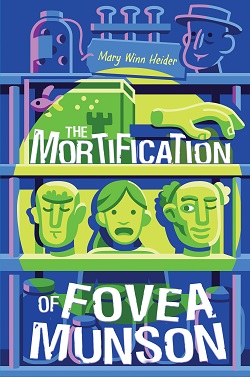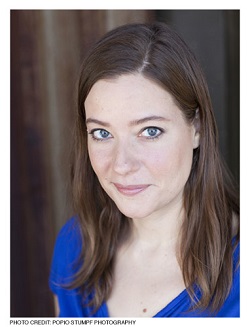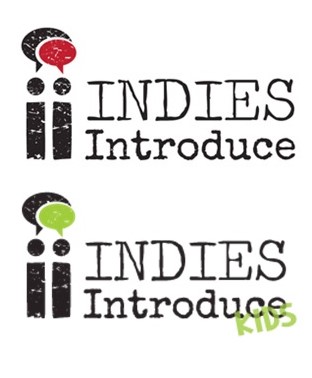An Indies Introduce Q&A With Mary Winn Heider
 Mary Winn Heider is the author of The Mortification of Fovea Munson (Disney Hyperion), an Indies Introduce Winter/Spring 2018 middle grade debut and a Summer 2018 Kids’ Indie Next List pick.
Mary Winn Heider is the author of The Mortification of Fovea Munson (Disney Hyperion), an Indies Introduce Winter/Spring 2018 middle grade debut and a Summer 2018 Kids’ Indie Next List pick.
“Spoiler alert: This book has talking heads!” said Katie McGinley of Wild Rumpus in Minneapolis, Minnesota, who served on the bookseller panel that selected Heider’s book. “It’s the summer before eighth grade and Fovea Munson definitely does not want to spend it working in her parents’ cadaver lab. Dead bodies? No way. But when the specimens start speaking, what can a girl do? This madcap adventure is possibly the zaniest I have ever encountered. It’s equally heartfelt, as Fovea helps the heads achieve their unfulfilled dreams, makes a new friend, and finds the courage to tell her parents she definitely does not want to be a doctor. Don't be afraid to pick it up — this book is head and shoulders above the rest!”
Heider is an ensemble member with the Barrel of Monkeys theater company in Chicago; she also teaches creative writing to third, fourth, and fifth graders in public schools throughout the city. She is a graduate of the Vermont College of Fine Arts’ Writing for Children and Young Adults program.
Here, McGinley and Heider discuss how theater, middle-school friendships, and ordering body parts had an impact on the creation of the author’s debut.
Katie McGinley: The Mortification of Fovea Munson is a comical mystery set in a cadaver lab featuring three actual talking heads. I’m pretty sure this is a first for middle-grade fiction. How did you come up with this unlikely setting and premise?
 Mary Winn Heider: It was sort of a glorious accident. I was working on a very different story and through an odd series of events wound up getting a full-time job as the receptionist in a cadaver lab. It wasn’t a job that had ever been on my radar (I’m guessing it isn’t on any radars, anywhere), but I actually loved it. It was inspiring and weird, which is a pretty ideal spot for me.
Mary Winn Heider: It was sort of a glorious accident. I was working on a very different story and through an odd series of events wound up getting a full-time job as the receptionist in a cadaver lab. It wasn’t a job that had ever been on my radar (I’m guessing it isn’t on any radars, anywhere), but I actually loved it. It was inspiring and weird, which is a pretty ideal spot for me.
Needless to say, the other story went in a drawer. And as I started writing, it quickly became clear that using the lab was perfect. On one hand, the stakes were super high: every day that I went to work, I found myself considering my own mortality. And my grandparents donated their bodies to science, so it felt somehow extra personal. On the other hand, the whole thing was really absurd — I was making signs to remind people not to wear flip-flops while they practiced surgeries. I was ordering body parts online. Minor spoiler: In the book, Fovea accidentally orders 600 legs. I totally did that.
So there I was, at this intersection of super high stakes and total absurdity — and it felt so perfectly like my experience of middle school. Deadly serious. Completely bananas. Empirically, I’ll admit that a cadaver lab seems like an unlikely setting for a middle-grade book. But emotionally, I didn’t have to do anything to make it fit. As far as the premise goes, Fovea came at me, fully formed. I knew she didn’t want to be there. The three heads appeared shortly thereafter, and when it turned out they wanted to be in a barbershop quartet, everything started coming together. Or falling apart, really.
KM: You have a background in theater, which I think is what gives this book its strong physical, visual quality. Which came first for you, writing or theater? And how does theater influence your writing?
MWH: There’s definitely a strong relationship, going way back. I was a reading and play-going fiend as a kid. I wanted to write, but didn’t have the patience for terrible first drafts. In theater, I had the safety of the rehearsal space to try things and fail — and there wasn’t any evidence! Writing was all about the cold, awful evidence of the failure. It took years and years to think of those rough, early drafts as rehearsal space, but now I find that thought really buoying.
And I think you’re right about the technical relationship, too — my theater work honed my understanding of how to stage an ensemble in a space, and knowing who should be pulling focus, and the importance of drawing the audience’s eye in a deliberate way. I actually had a whole blocking rehearsal for the climactic scene and played it out with action figures on a tiny diorama set that I made!
That said, I didn’t exactly help myself out by making three of the main characters bodiless. I turned a serious Samuel Beckett corner when I suddenly had to come up with meaningful blocking for a bunch of strongly opinioned heads.
Also, in terms of less tangible influence, a lot of the theater I do right now is with kid authors in Chicago Public Schools. They’re pretty incredible, and I’m constantly inspired. They remind me to keep myself open and curious, and my best writing happens when I honor those ideas.
KM: Fovea struggles to tell her parents that she doesn’t want to be a doctor like them. Did your parents have expectations for your career that didn’t match what you wanted for yourself?
MWH: They didn’t — I was wildly lucky in the parental department. I got the perfect fit for me. My folks always wanted me to work hard, but they were never prescriptive. (And I definitely tested that theory over the years — I was a bartender on a train in Alaska, I got some grants to run off and do ethnographies of small family circuses in Italy, I was a professional actor. Basically, if it didn’t have retirement, I was all in.)
Where they DO line up is in their joy for the world around them. Fovea’s parents, with their matching “Do No Harm” tattoos, are just a little more…focused, shall we say.
KM: For all its zany humor, The Mortification of Fovea Munson is also a heartfelt look at friendship and how it changes as kids go through middle school. What advice do you have for kids who find themselves unexpectedly between friends?
MWH: Oof. Between friends always feels so murky. Who’s to know you’ll find another friend on the other side? I made it through my own middle-school friend desert by digging into what I loved: music, books, theater. I couldn’t see the big picture then, but it’s clear now that those things led me to the people who became my best friends for the rest of middle school and high school. So I guess my advice is to still be yourself, and be curious about who you are and what you care about. Those things are important and meaningful. That’s ultimately how you’ll find your people. And I think that’s true forever.
KM: Thank you so much for writing this book. I really can’t wait to share it with our readers this summer! Can you tell us anything about what you’re working on next?
MWH: Oh, thank you for reading it! Right now, I’m working on another middle-grade adventure. It starts when somebody throws all the tubas off the school roof. As the former second chair French horn for Hand Middle School, I can assure you that I have a lot of concerns.
 The Mortification of Fovea Munson by Mary Winn Heider (Disney Hyperion, 9781484780541, Middle Grade, $16.99) On Sale Date: 6/5/2018.
The Mortification of Fovea Munson by Mary Winn Heider (Disney Hyperion, 9781484780541, Middle Grade, $16.99) On Sale Date: 6/5/2018.
Find out more about the author by following her on Twitter.
ABA member stores are invited to use this interview or any others in our series of Q&As with Indies Introduce debut authors in newsletters and social media and in online and in-store promotions. Please let us know if you do.

